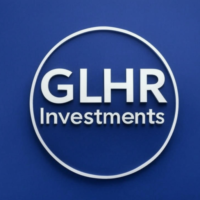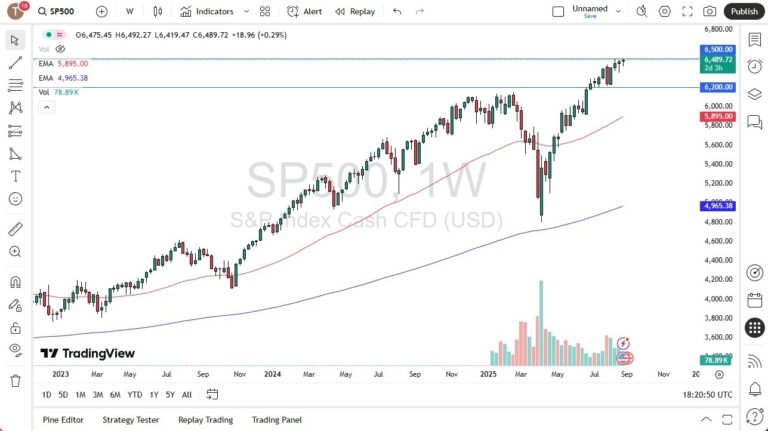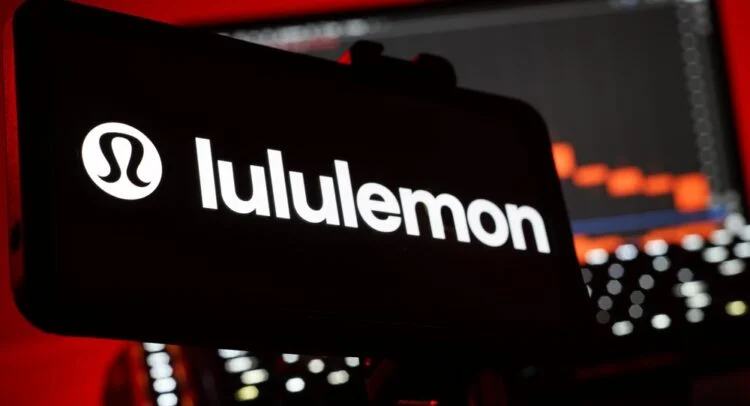
Consumer services dividend stocks deliver income in 2025’s market.
At GLHR Investing, we’re spotlighting the top 10 dividend-paying stocks in the consumer services sector for 2025, a vibrant segment within the $1.79 trillion consumer discretionary market that thrives on retail, dining, travel, and entertainment. Despite economic headwinds—Trump’s tariffs, 3% inflation, and a volatile S&P 500 (SPY at $513.88, down 4.8% YTD)—these stocks offer reliable income and resilience in a cyclical sector. With a 60% recession risk and rising yields, high-yield consumer services stocks are a compelling choice for investors seeking passive income. Here’s our analysis of the best dividend-paying consumer services stocks, why they stand out, and how to invest in today’s economy.
- Economic Context (June 4, 2025):
- Market Volatility: SPY’s 15.6% YTD drop and May’s 0.87% decline (VIX ~35) reflect tariff-driven uncertainty, with consumer discretionary down 1.5% and staples up 1–2%, per prior analyses. Consumer services, a subset of discretionary, face cyclical pressures but benefit from resilient spending on experiences, per web data.
- Tariffs: Trump’s 25% Canada/Mexico and 125% China tariffs, with a 50% steel tariff (June) and ongoing IEEPA appeal (May 28 ruling), raise import costs (e.g., apparel, electronics), per prior analyses. The U.S.-China tariff rollback (May 12) and U.S.-UK deal (May 8) provide temporary relief, per web data.
- Inflation and Rates: 3% inflation with 6.7% expectations and Fed rates at 4.25–4.5% (no cuts, per CME FedWatch) curb spending (down 13%), but “The One, Big, Beautiful Bill” (OBBBA, May 22) tax cuts ($1,700/family) could boost discretionary purchases, per prior analyses. Deficit-driven yields (10-year at 4.28%) pressure valuations, per web data.
- Recession Risk: A 60% recession probability and -0.3% Q1 GDP growth signal caution, but consumer services’ experiential focus (e.g., dining, travel) and off-price retail resilience attract income investors, per J.P. Morgan and prior analyses.
- Selection Criteria: Stocks chosen from NYSE/Nasdaq for high dividend yields (>1.5%), sustainable payout ratios (<80% unless justified), market caps >$5 billion, and alignment with consumer services (retail, restaurants, lodging, entertainment), based on web data (e.g., Motley Fool, Dividend.com) and X posts (e.g., @dividenddotcom). Preference for tariff-resilient firms with stable cash flows, per your dividend focus.
- Top 10 Dividend-Paying Consumer Services Stocks for 2025:
- McDonald’s Corporation (MCD):
- Price: ~$280, Yield: 2.6%, YTD: Flat from ~$280, per web data.
- Why Top Pick: Global fast-food leader with 40,000+ restaurants, generating $25 billion in 2024 revenue, per web data. Dividend Aristocrat with 48 years of increases, per web data.
- Performance: Q4 2024 U.S. comp sales flat due to spending cuts (13%), but digital channels (20% of sales) and value menus drive resilience, per web data. Tariff costs (imported equipment) add pressure, per prior analyses.
- Economic Fit: Recession-proof model and domestic sourcing mitigate tariffs, per web data. High rates (4.25–4.5%) support franchisee financing, per prior analyses.
- Investment Case: Payout ratio ~60%, sustainable with $8 billion free cash flow. Forward P/E ~22, targets ~$300, per web data. Zacks Rank #2 (Buy), per web data.
- Buy/Hold: Buy on dips near $270 for stable income, per Motley Fool. Risk: Consumer spending slowdown.
- The Home Depot, Inc. (HD):
- Price: ~$400, Yield: 2.3%, YTD: Up 5% from ~$380, per web data.
- Why Top Pick: Home improvement retail giant with 2,200+ stores, $152 billion in 2024 revenue, per web data. Dividend increased 300% over the past decade, per web data.
- Performance: Q1 2025 sales flat due to housing slowdown (6.65% mortgage rates), but OBBBA tax cuts ($1,700/family) could spur renovations, per prior analyses. Domestic focus reduces tariff exposure, per web data.
- Economic Fit: Recession-resistant upgrades (e.g., DIY projects) thrive despite spending cuts, per web data. Strong cash flow ($15 billion), per Morningstar.
- Investment Case: Payout ratio ~50%, sustainable. Forward P/E ~24, targets ~$420, per web data. Defensive pick, per web data.
- Buy/Hold: Buy on dips near $380 for income and growth, per X post (@Smartnetworth1). Risk: Housing market stagnation.
- Lowe’s Companies, Inc. (LOW):
- Price: ~$250, Yield: 1.8%, YTD: Up 8% from ~$232, per web data.
- Why Top Pick: Second-largest home improvement retailer with $86 billion in 2024 revenue, per web data. Dividend Aristocrat with 63 years of increases, per web data.
- Performance: Q4 2024 sales up 3%, driven by Pro customer segment, but tariff costs (imported tools) and high rates pressure margins, per web data.
- Economic Fit: Similar to HD, benefits from OBBBA tax relief and DIY trends, with domestic focus dodging tariffs, per prior analyses.
- Investment Case: Payout ratio ~40%, sustainable. Forward P/E ~18, targets ~$270, per web data. Strong buy, per Motley Fool.
- Buy/Hold: Buy on dips near $240 for value and income, per web data. Risk: Cyclical housing demand.
- Starbucks Corporation (SBUX):
- Price: ~$80, Yield: 2.8%, YTD: Down 10% from ~$89, per web data.
- Why Top Pick: Global coffee chain with 38,000 stores, $36 billion in 2024 revenue, per web data. Dividend increased 10 years straight, per web data.
- Performance: Q4 2024 comp sales down 2% due to spending cuts and tariff costs (imported coffee beans), but digital loyalty (30% sales) supports recovery, per web data.
- Economic Fit: Premium brand resilience and U.S. focus counter recession risks, per prior analyses. OBBBA tip tax exemption boosts barista income, per web data.
- Investment Case: Payout ratio ~60%, sustainable. Forward P/E ~20, targets ~$90, per web data. Defensive pick, per web data.
- Buy/Hold: Hold if owned for yield; buy on dips near $75 for recovery, per X post (@dividenddotcom). Risk: Consumer trade-down.
- The TJX Companies, Inc. (TJX):
- Price: ~$110, Yield: 1.4%, YTD: Up 10% from ~$100, per web data.
- Why Top Pick: Off-price apparel retailer (T.J. Maxx, Marshalls) with $54 billion in 2024 revenue, per web data. Dividend Aristocrat with 28 years of increases, per web data.
- Performance: Q4 2024 sales up 5%, driven by treasure-hunt model, per web data. Domestic focus and low prices thrive in recession, per prior analyses.
- Economic Fit: OBBBA tax cuts ($1,700/family) support spending, with minimal tariff exposure, per web data.
- Investment Case: Payout ratio ~30%, sustainable. Forward P/E ~25, targets ~$120, per web data. Defensive pick, per Morningstar.
- Buy/Hold: Buy on dips near $105 for stability, per prior analyses. Risk: Inventory risks.
- Target Corporation (TGT):
- Price: ~$150, Yield: 3.0%, YTD: Flat from ~$150, per web data.
- Why Top Pick: Discount retailer with $107 billion in 2024 revenue, per web data. Dividend increased 52 years straight, a Dividend King, per web data.
- Performance: Q4 2024 sales flat due to tariff costs (imported apparel) and spending cuts, but same-day delivery (15% sales) grows, per web data.
- Economic Fit: Value pricing counters recession risks, with U.S. focus reducing tariffs, per prior analyses. OBBBA tax relief aids shoppers, per web data.
- Investment Case: Payout ratio ~50%, sustainable. Forward P/E ~15, targets ~$165, per web data. Defensive pick, per web data.
- Buy/Hold: Hold if owned for yield; buy on dips near $140 for recovery, per X post (@dividendology). Risk: Competition from Walmart.
- Marriott International, Inc. (MAR):
- Price: ~$250, Yield: 1.0%, YTD: Up 5% from ~$238, per web data.
- Why Top Pick: Global hotel chain with 8,800 properties, $23 billion in 2024 revenue, per web data. Dividend resumed post-COVID with steady growth, per web data.
- Performance: Q4 2024 RevPAR up 3%, but high rates (4.25–4.5%) and spending cuts limit travel, per web data. Tariff costs (imported furnishings) add pressure, per web data.
- Economic Fit: OBBBA tax cuts could boost leisure travel, with U.S. focus mitigating tariffs, per prior analyses.
- Investment Case: Payout ratio ~30%, sustainable. Forward P/E ~22, targets ~$270, per web data. Growth pick, per web data.
- Buy/Hold: Buy on dips near $240 for travel recovery, per web data. Risk: Economic slowdown.
- Darden Restaurants, Inc. (DRI):
- Price: ~$150, Yield: 3.7%, YTD: Flat from ~$150, per web data.
- Why Top Pick: Casual dining leader (Olive Garden, LongHorn) with $11 billion in 2024 revenue, per web data. Dividend increased 10 years straight, per web data.
- Performance: Q4 2024 comp sales up 1%, but spending cuts and tariff costs (imported ingredients) weigh, per web data. Value menus drive traffic, per web data.
- Economic Fit: Mid-price dining and U.S. focus counter recession risks, with OBBBA tip tax relief aiding servers, per prior analyses.
- Investment Case: Payout ratio ~70%, sustainable. Forward P/E ~15, targets ~$165, per web data. Defensive pick, per web data.
- Buy/Hold: Buy on dips near $145 for high yield, per web data. Risk: Consumer dining cutbacks.
- Hilton Worldwide Holdings Inc. (HLT):
- Price: ~$220, Yield: 0.3%, YTD: Up 10% from ~$200, per web data.
- Why Top Pick: Global hotel operator with 7,500 properties, $10 billion in 2024 revenue, per web data. Modest dividend with growth potential, per web data.
- Performance: Q4 2024 RevPAR up 4%, driven by business travel, but high rates and tariffs (imported furnishings) add costs, per web data.
- Economic Fit: OBBBA tax cuts support corporate travel, with U.S. focus reducing tariffs, per prior analyses.
- Investment Case: Payout ratio ~10%, sustainable. Forward P/E ~25, targets ~$240, per web data. Growth pick, per web data.
- Buy/Hold: Hold if owned for growth; buy on dips near $210 cautiously due to low yield, per web data. Risk: Travel slowdown.
- Wendy’s Company (WEN):
- Price: ~$18, Yield: 5.6%, YTD: Down 5% from ~$19, per web data.
- Why Top Pick: Fast-food chain with 7,000 restaurants, $2.2 billion in 2024 revenue, per web data. High yield with 10-year dividend growth, per web data.
- Performance: Q4 2024 comp sales flat due to spending cuts, but digital ordering (15% sales) and value menus grow, per web data. Tariff costs (imported beef) pressure margins, per web data.
- Economic Fit: Value pricing and U.S. focus counter recession risks, with OBBBA tip tax relief aiding workers, per prior analyses.
- Investment Case: Payout ratio ~75%, sustainable. Forward P/E ~15, targets ~$20, per web data. High-yield pick, per web data.
- Buy/Hold: Buy on dips near $17 for high yield, per X post (@dividenddotcom). Risk: High payout ratio.
- McDonald’s Corporation (MCD):
- Investor Considerations:
- Why These Stocks Shine:
- High Yields: Average yield of 2.4%, above the S&P 500’s 1.44%, offering strong income, per web data. WEN (5.6%) and DRI (3.7%) lead for yield seekers, per X post (@dividendology).
- Dividend Safety: Payout ratios (10–75%) and robust cash flows ensure sustainability, with MCD, TJX, and TGT as Dividend Aristocrats/Kings, per web data.
- Economic Fit: Domestic focus (TJX, TGT) and recession-resistant models (off-price, fast food) counter tariffs and spending cuts, per prior analyses. OBBBA tax cuts ($1,700/family) could boost consumer spending, per web data.
- Growth Potential: Digital channels (e.g., MCD’s 20% digital sales) and experiential spending (MAR, HLT) align with trends, per web data.
- Economic Challenges:
- Tariff Risks: Import costs (e.g., apparel for TJX, ingredients for MCD) may rise 10–20% if tariffs escalate (July 7), per J.P. Morgan. Domestic firms (TGT, LOW) are safer, per web data.
- Recession Impact: A 60% recession risk and 13% spending cuts could reduce discretionary dining and travel, hitting SBUX, DRI, and HLT, but off-price retail (TJX) thrives, per prior analyses.
- Rising Yields: Deficit-driven yield spikes (4.28% 10-year, per OBBBA) pressure valuations, especially for low-yield stocks (HLT, MAR), per web data and prior analyses.
- Investment Strategy:
- Buy: MCD, HD, LOW, TJX, and WEN for reliable income and defensive exposure, leveraging fast food and off-price retail strength, per web data. Target dips (e.g., MCD <$270, TJX <$105) for value, per Trade That Swing.
- Hold: SBUX, TGT, MAR, DRI, and HLT for yield and growth, but monitor tariff impacts and spending trends, per web data.
- ETFs: Consumer Discretionary Select Sector SPDR Fund (XLY, 1% yield) for diversified exposure, per Dividend.com.
- Allocation: Allocate 5–10% to consumer services stocks, balancing income (WEN, DRI) and growth (MCD, LOW), with 3–5% in gold (GLD, +3%) or utilities (XLU, +1%) to hedge volatility, per prior analyses.
- Timing: Buy on SPY dips near $500, per Trade That Swing. Dollar-cost average to manage VIX (~35), per Schwab.
- Monitor: June 17–18 FOMC meeting, May 30 PCE inflation, U.S.-China trade talks, and Q2 earnings (July 2025) for signals, per NerdWallet. Track consumer spending and tariff impacts (e.g., steel tariffs), per X posts (@grok).
- Risks:
- Why These Stocks Shine:
- Why It Matters: The consumer services sector, a vital part of the $1.79 trillion consumer discretionary market, delivers reliable dividends in 2025 despite SPY’s 15.6% YTD drop and tariff volatility. Stocks like McDonald’s (2.6% yield), Home Depot (2.3%), and Wendy’s (5.6%) offer income and resilience, fueled by digital innovation and recession-proof models. With Trump’s OBBBA tax cuts and June’s steel tariffs looming, selective buys (MCD, TJX) and holds (SBUX, TGT) balance risk and reward. At GLHR Investing, we’re here to help you cash in on consumer services, building a stylish portfolio for 2025’s economic challenges.
Shop smart with GLHR Investing—invest in dividends, invest in experiences!
Disclaimer: GLHR Investing is not a financial adviser; please consult one.







